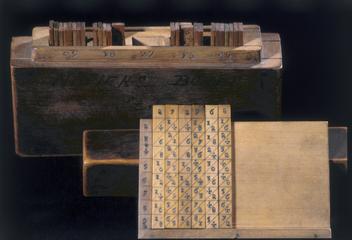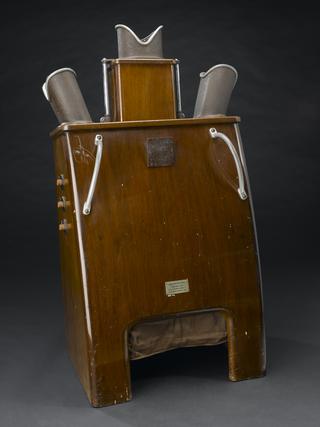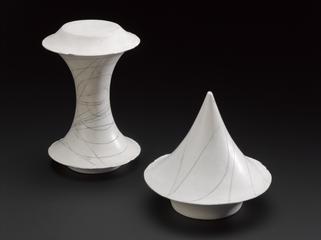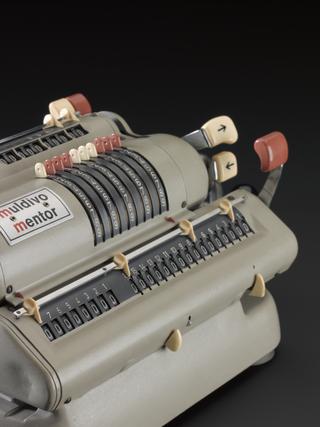
Stanhope square demonstrator, c.1805.
- Made:
- circa 1805 in Chevening
- inventor:
- Charles Stanhope Charles Stanhope










Stanhope Demonstrator, an instrument for performing logical operations designed by Charles Stanhope.
The square type of Stanhope demonstrator, invented by Charles, 3rd Earl Stanhope (1753-1816) in about 1805, followed his circular demonstrators. The machine can be used to draw the correct conclusions from logical propositions, and allows the user to see the combined probability of two events ocurring. Stanhope was the first to attempt to solve logical problems by mechanical means.
Details
- Category:
- Mathematics
- Object Number:
- 1953-353
- Measurements:
-
As Box: 180 mm x 140 mm x 50 mm, 0.88 kg
Closed: 180 mm x 140 mm x 50 mm, .88 kg
Lid: 180 mm x 140 mm x 30 mm, 0.38 kg
Extended: 240 mm x 170 mm x 5040 mm, .5 kg
- type:
- logic demonstrator
- credit:
- Earl of Stanhope.



